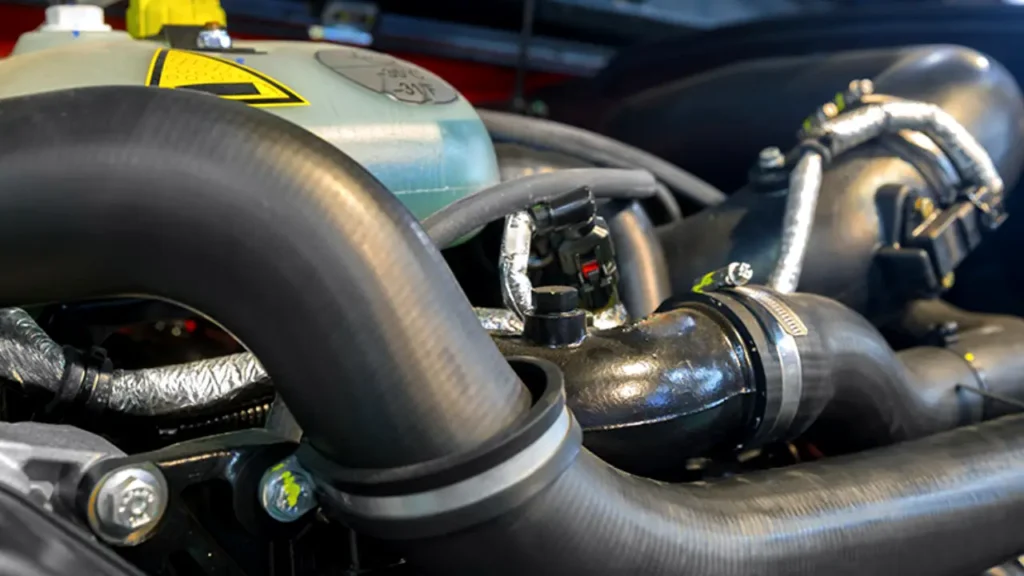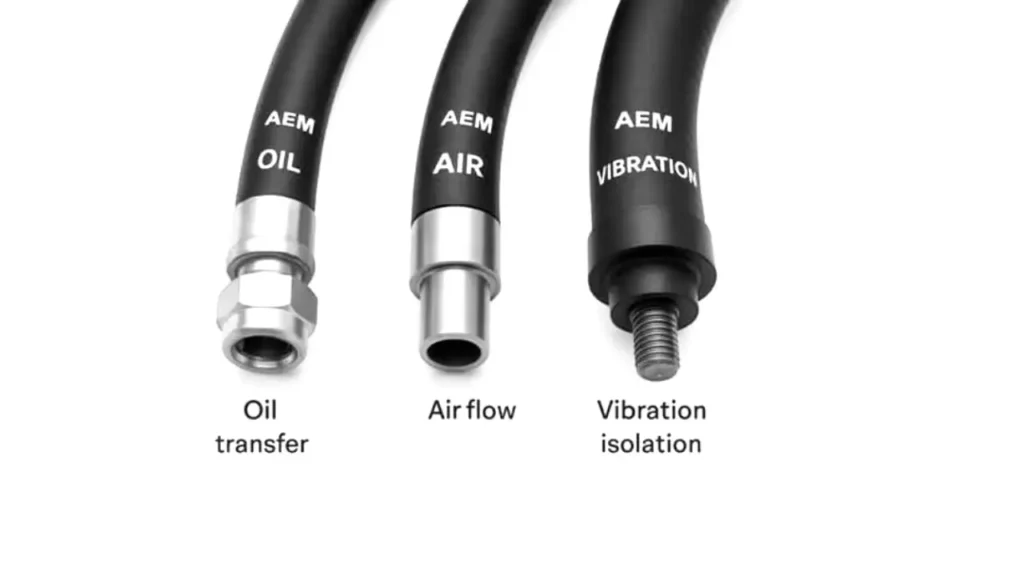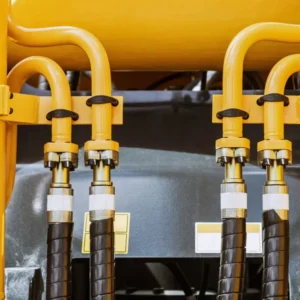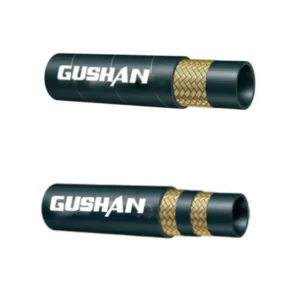The automotive and industrial sectors demand materials that can withstand harsh operating conditions, especially under the hood. Our ultimate guide introduces AEM (Ethylene Acrylic Elastomer) rubber, a specialized polymer prized for its exceptional balance of heat and oil resistance, outperforming many standard elastomers like EPDM.
AEM rubber, often known by the brand name Vamac®, is an essential component for critical seals, hoses, and gaskets in high-performance engines and transmissions. Explore the detailed properties, diverse applications, and comparison with other elastomers to understand why AEM is the robust, long-lasting solution your project needs.
What Is AEM Rubber?

AEM rubber, or Ethylene Acrylic Elastomer, is a high-performance synthetic rubber designed to meet the rigorous demands of the automotive and industrial sectors.
It is a copolymer primarily composed of ethylene and methyl acrylate monomers, which gives it a unique balance of properties. The ethylene component contributes to excellent low-temperature flexibility, while the acrylic group provides resistance to oils and heat, making it a robust, versatile material.
What Is AEM Rubber Made of?
AEM rubber (Ethylene Acrylic Elastomer) is a synthetic copolymer created through the polymerization of key monomers, giving it a saturated polymer backbone with polar side groups. This unique chemical structure provides an exceptional combination of heat resistance, low-temperature flexibility, and resistance to oils and ozone.
The foundational ingredients for AEM rubber are carefully selected monomers that dictate the final material’s physical and chemical performance properties:
- Ethylene Monomer: This hydrocarbon gas contributes significantly to the saturated polymer backbone, providing AEM with its excellent resistance to ozone, oxidation, and general weathering. The ethylene content is also key to ensuring the elastomer maintains its flexibility at low temperatures, down to approximately −40°C for specialized grades.
- Methyl Acrylate Monomer. As the main acrylic component, this polar monomer is responsible for the AEM rubber’s resistance to hot oils, lubricants, and transmission fluids. A higher ratio of methyl acrylate in the formulation generally improves oil resistance, though this must be balanced against its effect on low-temperature performance.
- Cure-Site Monomer: Traditional AEM formulations often include a small amount of a third monomer, typically containing carboxylic acid groups.7 This minor component does not heavily influence the primary physical properties but provides sites for cross-linking (vulcanization) with diamine curative systems, essential for forming the final, durable rubber network.
AEM Rubber Benefits

AEM rubber offers a compelling balance of high-end performance attributes, making it an indispensable material for critical components in challenging environments, particularly those found under the hood of a vehicle. Its unique chemistry provides long-lasting reliability where standard elastomers fail.
Here are the primary benefits of Ethylene Acrylic Elastomer (AEM):
- Exceptional Heat Resistance: AEM can withstand continuous operating temperatures up to 150∘C (302 °F) and intermittent peaks up to 175°C (347°F). This thermal stability ensures that seals and hoses maintain their structural integrity and flexibility in the increasingly hot engine compartments of modern, high-performance vehicles.
- Superior Oil and Fluid Resistance: It demonstrates excellent resistance to hot engine oils, synthetic lubricating greases, and automatic transmission fluids (ATF). This key benefit prevents the material from swelling, hardening, or degrading when constantly exposed to aggressive automotive and industrial system liquids.
- Outstanding Environmental Resistance: The saturated polymer backbone of AEM provides it with superior resistance to ozone, UV radiation, and general weathering. This makes it an ideal choice for components exposed to the atmosphere, guaranteeing long-term durability and preventing surface cracking or hardening over time.
- Excellent Dynamic Properties: AEM compounds feature a very good low compression set and retain their flexibility across a wide temperature range (down to −40°C). This makes it perfect for dynamic seals and vibration dampers, maintaining a tight, reliable seal even when subjected to constant movement and stress.
Where to Use AEM Rubber Hoses
AEM rubber is primarily selected for hose applications in demanding automotive and industrial environments where standard rubbers (like EPDM or NBR) cannot handle the combined stress of high heat, hot oil, and constant environmental exposure. It is a crucial, high-performance solution for under-the-hood components.
The most common and necessary uses for AEM rubber hoses include:
- Turbocharger and Air Intake Hoses AEM is the material of choice for turbocharger air ducts and air intake resonator hoses because it resists high temperatures from compressed air and hot oil vapor blow-by. This resilience prevents the hoses from becoming brittle, cracking, or collapsing under vacuum, ensuring optimal engine performance.
- Engine and Transmission Oil Lines Its excellent resistance to aggressive, hot lubricating oils and automatic transmission fluid (ATF) makes AEM perfect for transmission cooler hoses and oil drain lines. This application requires the hose to maintain integrity and prevent leakage for the vehicle’s entire operational life, resisting degradation from oil additives.
- Crankcase Ventilation (PCV) Hoses These hoses carry a corrosive mixture of hot oil vapor, combustion by-products, and moisture. AEM’s resistance to ozone, oil, and heat cycling ensures the hoses do not prematurely harden or fail, which is vital for emissions control and the proper functioning of the engine’s positive crankcase ventilation system.
- Industrial and Heavy Equipment Beyond passenger vehicles, AEM hoses are used in heavy machinery, power steering, and hydraulic systems that operate under high-stress conditions. They are preferred for flexible couplings and hydraulic hose linings where long service life, vibration damping, and consistent performance against synthetic industrial fluids are non-negotiable requirements.
Why Choose Our AEM Rubber Hoses?
Choose our AEM (Ethylene Acrylic Monomer) rubber hoses because they are the superior choice for high-performance applications that demand more than traditional rubber. AEM provides a unique combination of exceptional thermal stability and fluid resistance, ensuring fewer failures and lower maintenance costs in the most challenging engine and industrial settings.
The key advantages of selecting our AEM rubber hoses are:
- Exceptional Resistance to Hot Oil and Fluids: AEM’s chemical structure provides outstanding resistance to hot engine oil, synthetic transmission fluid (ATF), and lubricant additives. This capability ensures the hose will not swell, crack, or degrade in critical oil lines and seals, offering a significantly longer and more reliable service life than standard nitrile rubber.
- Superior High-Temperature Performance: Our hoses withstand continuous operating temperatures up to 150∘C and tolerate short-term peaks up to 175∘C. This heat stability is essential for modern, high-output engines, especially in turbocharger air intake systems where other elastomers like EPDM would quickly become brittle and fail prematurely.
- Outstanding Weathering and Ozone Resistance: Unlike less resilient rubbers, AEM is engineered with a saturated polymer backbone that resists ozone and weathering degradation. This prevents surface cracking and hardening from prolonged exposure to air, sunlight, and environmental contaminants, maintaining material flexibility and sealing properties over time.
- Balanced Flexibility and Dynamic Durability: AEM retains its excellent flexibility even in low-temperature conditions, unlike some specialty rubbers that stiffen. This attribute, combined with good dynamic properties, makes our hoses ideal for applications involving constant vibration and flexing, such as air ducts and engine breather lines, preventing fatigue failure.
Conclusion
This guide confirms that AEM rubber is a superior solution for applications requiring outstanding resistance to hot oil, extreme temperatures (up to 175℃, and environmental aging. Its excellent dynamic properties and low compression set make it indispensable for demanding automotive seals, turbocharger hoses, and gaskets, offering a perfect blend of performance and value.
Understanding the specific benefits of AEM—namely its halogen-free composition and resistance to aggressive lubricating fluids and coolants—allows engineers to specify parts that guarantee system reliability and extended service life. For critical components, selecting AEM means future-proofing your equipment against degradation and failure in harsh environments.
To ensure your designs benefit from these high-performance properties, get wholesale AEM rubber hoses and custom rubber products directly from our Gushan Rubber. We provide expertly compounded AEM solutions, manufactured to your exact specifications, offering quality assurance and competitive pricing for your large-scale industrial and automotive needs.



